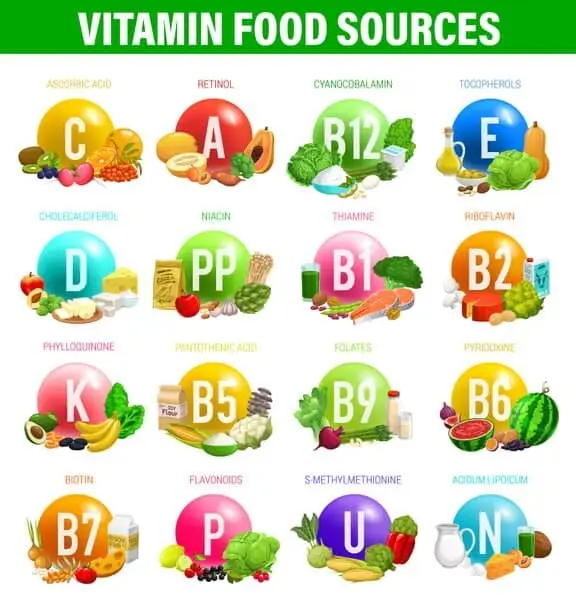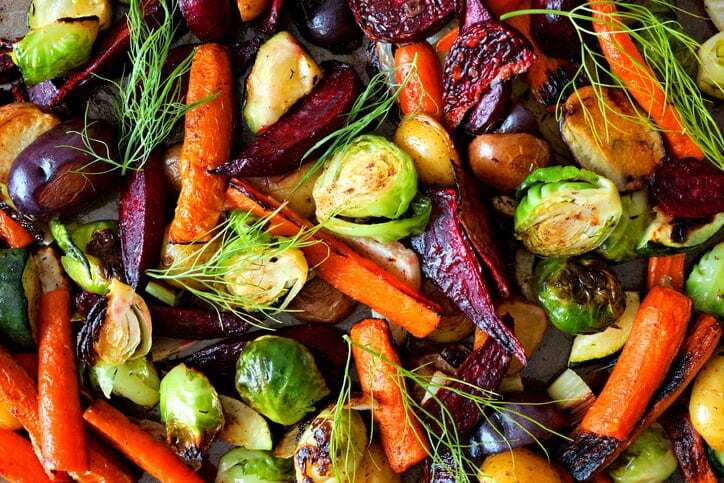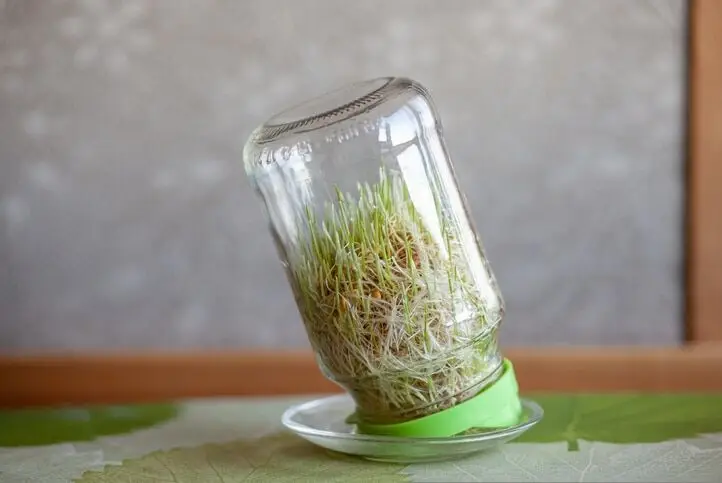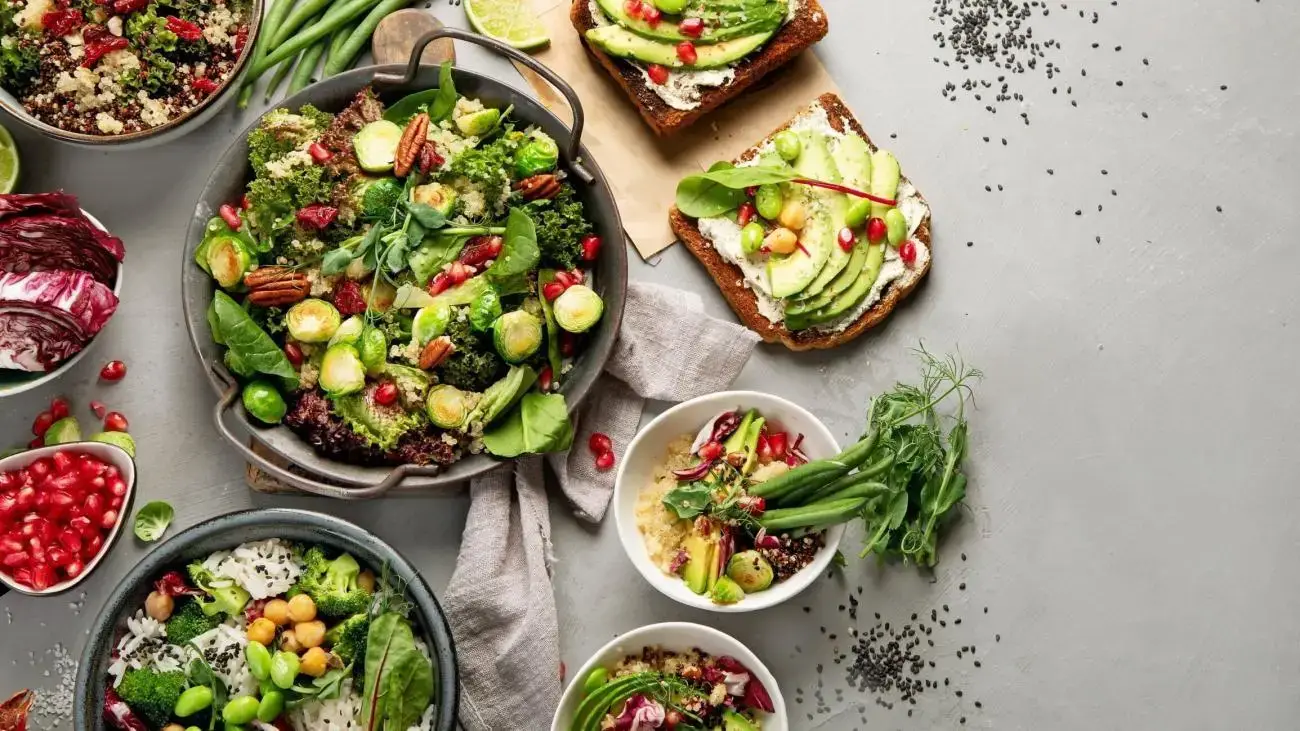Nutritious and Delicious Winter Vegetables – From Sow to Plate

Nutritious Winter Vegetables
Here are several nutritious plants that can be grown during the winter season. Here are a few options:
Kale – Kale is a leafy green vegetable that is packed with vitamins and minerals, including vitamin A, vitamin C, and calcium. It’s also high in fiber and low in calories, making it a great addition to any winter garden.
Spinach – Spinach is another leafy green vegetable that is high in vitamins A and C, as well as iron and calcium. It’s a cold-hardy crop that can be grown in a greenhouse or under row covers during the winter.
Carrots – Carrots are a root vegetable that can be grown in a cold frame or greenhouse during the winter. They are high in vitamin A and are a good source of fiber.
Brussels sprouts – Brussels sprouts are a member of the cruciferous family and are high in vitamin C, fiber, and antioxidants. They can be grown in a cold frame or greenhouse and are a great addition to any winter garden.
Winter squash – Winter squash, such as butternut squash, acorn squash, and spaghetti squash, are all nutritious options that can be grown during the winter months. They are a good source of vitamin A, potassium, and fiber.
Remember, the key to successful winter gardening is to start early, choose cold-hardy varieties, and provide adequate protection from the cold.


Growing Winter Vegetables
Here are some general instructions for growing each of the plants:
Kale: Kale is a cool-season crop that can tolerate frost and even temperatures as low as 20°F (-6°C). It prefers well-draining soil that is rich in organic matter, and a pH range between 6.0 to 7.5. Plant kale seeds directly in the ground or start them indoors 4-6 weeks before the last frost date. Plant seeds 1/4 to 1/2 inch deep, and thin the seedlings to a spacing of 12-18 inches apart. Keep the soil moist, but not waterlogged, and fertilize with a balanced fertilizer every 4-6 weeks.
Spinach: Spinach is another cool-season crop that prefers moist, well-drained soil with a pH range of 6.0 to 7.5. Plant spinach seeds directly in the ground or start them indoors 4-6 weeks before the last frost date. Plant seeds 1/2 inch deep, and thin the seedlings to a spacing of 6-12 inches apart. Keep the soil moist, and fertilize with a balanced fertilizer every 4-6 weeks.
Carrots: Carrots prefer loose, well-draining soil with a pH range of 6.0 to 6.8. Sow carrot seeds directly in the ground 2-3 weeks before the last frost date. Plant seeds 1/4 to 1/2 inch deep, and thin the seedlings to a spacing of 2-4 inches apart. Keep the soil moist, and fertilize with a balanced fertilizer every 4-6 weeks.
Brussels sprouts: Brussels sprouts are a cool-season crop that prefers well-draining soil with a pH range of 6.0 to 7.5. Start Brussels sprout seeds indoors 6-8 weeks before the last frost date, and transplant them outdoors 2-3 weeks before the last frost date. Plant seedlings 24-36 inches apart. Keep the soil moist, and fertilize with a balanced fertilizer every 4-6 weeks.
Winter squash: Winter squash prefer well-draining soil with a pH range of 6.0 to 7.5. Plant winter squash seeds directly in the ground after the last frost date. Plant seeds 1 inch deep and 3-4 feet apart. Keep the soil moist, and fertilize with a balanced fertilizer every 4-6 weeks. Winter squash may require additional support as the vines grow, such as trellising or a wire cage.
Cooking Winter Vegetables
Here are some cooking instructions to help maximize flavor and nutrition for the plants mentioned:
- Kale: Kale can be cooked in a variety of ways, but one of the best methods is to sauté it. Heat a tablespoon of olive oil in a pan over medium heat. Add chopped garlic and sauté for 1-2 minutes until fragrant. Add chopped kale and stir-fry for 2-3 minutes until the kale is wilted and bright green. Season with salt, pepper, and a squeeze of lemon juice for added flavor and vitamin C.
- Spinach: Spinach is best cooked quickly to preserve its flavor and nutrition. Heat a tablespoon of olive oil in a pan over medium heat. Add minced garlic and sauté for 1-2 minutes until fragrant. Add spinach and stir-fry for 1-2 minutes until wilted. Season with salt, pepper, and a squeeze of lemon juice for added flavor and vitamin C.
- Carrots: Roasting is a great way to bring out the sweetness in carrots. Preheat the oven to 400°F (205°C). Peel and chop carrots into 1-inch pieces. Toss with olive oil, salt, and pepper. Roast in the oven for 20-30 minutes until tender and slightly caramelized. Sprinkle with fresh herbs, such as thyme or parsley, for added flavor and nutrition.
- Brussels sprouts: Roasting is also a great way to bring out the sweetness in Brussels sprouts. Preheat the oven to 400°F (205°C). Cut the Brussels sprouts in half and toss with olive oil, salt, and pepper. Roast in the oven for 20-30 minutes until tender and slightly caramelized. Sprinkle with grated Parmesan cheese or chopped nuts, such as almonds or pecans, for added flavor and nutrition.
- Winter squash: Winter squash can be roasted, mashed, or used in soups and stews. To roast squash, preheat the oven to 400°F (205°C). Cut the squash in half, remove the seeds, and brush with olive oil. Roast in the oven for 40-50 minutes until tender. Scoop out the flesh and season with butter, cinnamon, and a drizzle of honey for added flavor and nutrition.
Disclaimer
The information provided in this article is for educational and informational purposes only and is not intended as medical advice. It is not a substitute for professional medical advice, diagnosis, or treatment. Always seek the advice of a qualified healthcare provider with any questions you may have regarding a medical condition. The author and publisher of this article are not responsible for any adverse effects or consequences resulting from the use of any suggestions, preparations, or procedures described in this article.






